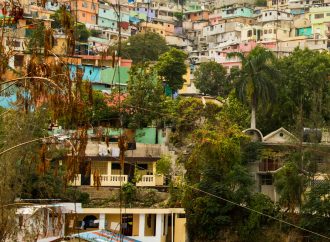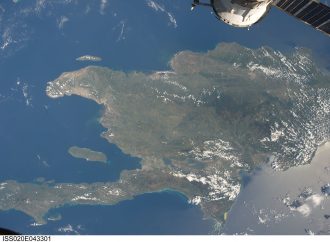By Elke Winter, Benjamin Zyla, Charlotte Murret-Labarthe University of Ottawa Origins of the crisis In March 2011, three months after the Arab Spring began in Tunisia, Egypt, and Libya, fifteen Syrian schoolchildren were arrested and tortured for writing on a wall the anti-regime slogan: “The people want the overthrow of the regime.” This event sparked
By Elke Winter, Benjamin Zyla, Charlotte Murret-Labarthe
University of Ottawa
Origins of the crisis
In March 2011, three months after the Arab Spring began in Tunisia, Egypt, and Libya, fifteen Syrian schoolchildren were arrested and tortured for writing on a wall the anti-regime slogan: “The people want the overthrow of the regime.” This event sparked massive outrage across the country, notably in Homs and Damascus, and led to protests and uprisings against President Bashar al-Assad.
In response, the president assembled a strong, militarized front comprised mainly of the Syrian Armed Forces, the National Defence Force, a pro-government militia led by members of his extended family, as well as Lebanese Hezbollah and Iranian Revolutionary Guards. High levels of brutality from the government were common in quelling these protests.
At the same time, rebel forces rallied together to form the Free Syrian Army (FSA) in July 2011 to support the civilian protest. The FSA gradually seized control of various towns and villages and surprised the government with their military capacity and resilience. These continuing battles between the government and its allies and the FSA have led to a civil war, called by some “the worst humanitarian crisis of our time.”
Syrians escape
In June 2011, with the escalation of violence and worsening living conditions, the civil war reached a military impasse and Syrians started to flee their country. By 2016, an estimated 13.5 million Syrians needed humanitarian assistance, 4.8 million sought refuge in other countries, mainly their neighbours, while another 6.5 million were internally displaced. In addition, more than two million Syrians had attempted to travel across the Mediterranean Sea to seek refuge in Europe.
Ultimately, the unprecedented migration resulted in border closures across Europe. Not only refugees from Syria, but also migrants from Afghanistan, Algeria, Bangladesh, Morocco, Pakistan, and Tunisia were seeking refuge. Finally, in March 2016, the European Union managed to negotiate a complex agreement with Turkey to host refugees rather than letting them enter the EU.
The volume of displaced people was also a significant burden on refugee camps in the countries around Syria. In December 2014, the World Food Program (WFP) announced a suspension of food vouchers in refugee camps due to a lack of funding, affecting 1.7 million Syrian refugees in Jordan, Lebanon, Turkey, Iraq, and Egypt. This aggravated the humanitarian crisis. In June 2015, with only 23% of funding requirements met, the UN was forced to announce a funding shortage for its agencies as well as NGOs providing immediate assistance on the ground.
Against this backdrop, and in light of suffering refugees being televised on TV, the German government announced in August 2015 that it would temporarily accept roughly 800,000 refugees. Sweden had already announced in 2013 that it would grant permanent residency to all Syrian refugees who applied. Since then, both countries, along with many others in the EU, have backtracked on their commitments.
Syrian refugees in Canada
In Canada, by the end of 2014, only 1,285 Syrians had been approved for Canadian refugee status, and just under 1,100 had travelled to Canada. At the beginning of 2015, Stephen Harper’s Conservative government made a pledge to accept 10,000 Syrian refugees over the next three years, most of them privately sponsored. Priority would also be given to individuals who belong to an ethnic, religious, or sexual minority. The modest interest in the crisis between 2011 and 2015 shifted dramatically on 3 September 2015 when the body of Alan Kurdi, 3 years old, washed up on the Turkish shore. Because of Alan Kurdi’s tragic death, Canadians finally realized that the “refugee crisis” was not merely a European problem, especially since Kurdi’s aunt had been trying to get the family to Canada. Justin Trudeau’s Liberal government, elected in October 2015, promised to admit an additional 25,000 refugees, with over half sponsored by the government — a goal officially attained on 27 February 2016. To date, 35,147 Syrian refugees have been resettled in Canada under the Liberal government.
In order to bring Syrian refugees to Canada, with the help of the United Nations Refugee Agency, the government first identifies those who desire to migrate to Canada then carefully screens and processes potential candidates. Currently, there are three different refugee resettlement programs bringing Syrian refugees to Canada: Government-Assisted, Privately Sponsored, and Blended Visa Office-Referred.
Resettlement into Canada can take six months or more. A medical examination, a background check, and a security check are necessary, while travel and medical costs are covered by a loan to the refugees. Currently, one year after their arrival, many Government-Assisted Refugees are transitioning from refugee assistance to social assistance. The challenges ahead are abundant: refugees have fled war, lived in refugee camps, had their education interrupted, and have lost family members. Despite the warm welcome of their sponsors, refugees in Canada tend to be chronically under-employed and many refugee youth experience racial discrimination and bullying.
Canada’s time to shine?
The influx of Syrian refugees may indeed be a “defining moment” for Canada, as underlined by Governor General David Johnston. On the one hand, their integration tests the country’s commitment to diversity, inclusiveness, and tolerance. On the other, we can learn much from the refugees’ courage, resilience, and adaptive capabilities. The arrival by now of 35,000 Syrian refugees is also a good opportunity to remember that Canada was built on welcoming others, from First Nations helping the first European settlers to survive to accommodating ethnically diverse migrants from all corners of the world. The tradition continues!
This text was adapted from an article published in “Refugee Pathways/Les parcours des réfugiés,” special issue of Canadian Diversity/Diversité Canadienne, fall 2016, https://acs-aec.ca/en/publications/canadian-diversity/ (free download of bilingual magazine).









